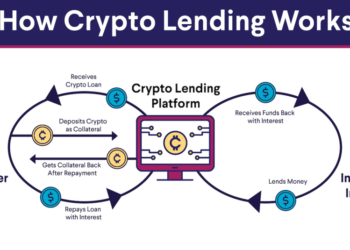In recent years, the largely unregulated cryptocurrency industry has provided excellent money-making opportunities for passionate enthusiasts. However, it has also resulted in significant losses for those who invested too much, posing risks to their savings.
Buying Bitcoin and cryptocurrencies has become relatively easy in recent years, no longer a significant barrier to using it as an investment. News about ETFs, retirement funds, and financial institutions often include cryptocurrencies in their investment portfolios with profitable returns. However, when is the right time to sell cryptocurrency?
Many believe that selling can be more challenging than buying an asset for investment. Various reasons can create obstacles, such as the psychological fear of missing out (FOMO). When an asset’s price rises, investors may feel that it could continue to increase. If the price drops suddenly, they might struggle to sell their holdings.

1. Lessons from the Dot-com Bubble
People still remember the infamous dot-com bubble in the stock market, caused by excessive speculation in internet-related companies in the late 1990s. Investors could have sold when the value of those businesses increased by 400%, generating life-changing profits. However, many waited, believing they could rise even more. Those individuals suffered losses of up to 80% of their initial investment when the market collapsed in October 2002.
Many argue that cryptocurrency is unrelated to the dot-com bubble and will persist. However, high volatility and speculation in the industry make all assets extremely risky.
2. Four Investment Principles
Besides having a specific plan, honest investors have identified key principles to follow when applying general investment strategies for many years. These principles also apply to cryptocurrencies:
- Only invest what you can afford to lose. Specifically, invest 5-10% of your total savings.
- Understand what you are investing in. It’s crucial not to chase an inflated asset but invest in what you believe has good fundamental principles, such as technological potential.
- If you’re not an experienced trader, holding onto an asset like Bitcoin for a few years (your financial advisor will often recommend at least 5 years) is enough to yield good profits.
- Establish a clear plan with your goals, both buying and selling goals, and stick to that plan.
However, saying is easier than doing, isn’t it?
As investors, at some point, we all experience the fear of missing out: we all put too much of our savings into risky investments, thinking they will make us rich. But, in the end, we all experience some losses.
Having basic knowledge of trading can help those who don’t want to sit and wait for profits when assets grow. However, even if we simply hodl and wait, when is the right time to sell them?
‘Hodling,’ as an investment strategy, has become more attractive and popular with industry confirmation, now valued at nearly 2 billion USD. Technological advancements have made cryptocurrencies resilient despite continuous volatility, and Bitcoin has achieved the status of a store of value similar to gold.
3. The Best Strategy for New Cryptocurrency Investors?
Hardcore bitcoiners pledge never to sell BTC because, in the end, it will become the new global currency system. All you have to do is accumulate as much as possible during bear markets and ensure you have enough for the long term to pass on to family and heirs.
Another common strategy for Bitcoin and other cryptocurrencies is dollar-cost averaging (DCA). Small amounts can be regularly transferred to your cryptocurrency wallet daily, weekly, or monthly. Providers and exchanges like Coinbase make it easy to set up a DCA service to transfer money regularly from your fiat bank account to your cryptocurrency wallet.
If you’re not a hardcore bitcoiner, you may consider holding top cryptocurrencies, another coin, or token for an extended period while diversifying your sales when assets appreciate.
4. Bitcoin Savings Plan
In 2013, Jameson Lopp, known for advocating privacy and Bitcoin, co-founder, and CTO of Casa, introduced the Bitcoin Savings Plan to help investors shape a strategy based on their circumstances and calculate profits based on the potential future price of Bitcoin.
Based on Sane and Simple Bitcoin Savings Plan (SSS) by rpietila on BitcoinTalk, this plan aims to help Bitcoin investors avoid significant mistakes such as buying at the beginning of a cycle and selling at the end. By 2013, many investors had earned life-changing profits by selling Bitcoin; however, others also suffered losses by selling too early.
The goal of this plan is to ‘Learn how to stop worrying and love volatility’ and create favorable conditions for setting goals and targets to achieve profitable trades by selling Bitcoin.
Starting with your initial investment, you can then determine the number of cycles or price ranges you expect before selling at the ideal price.
With your initial investment, you’ll set the initial exchange rate at which you bought Bitcoin, the cycle multiplier – for example, it will double or triple your initial investment – ending with setting the profit ratio you want to achieve.
We recommend you try and see if it helps you set your goals based on the potential future price of Bitcoin.
5. When Should You Sell Cryptocurrency?
Although many analysts argue that the four-year cycle related to Bitcoin’s halving event was broken last year, it still seems to define meaningful price declines and price increases in the market. Trends never only go up or down. Therefore, if you know when to buy, you can plan when to sell.
The entire cryptocurrency market relies heavily on Bitcoin’s movements. Bitcoin’s dominance is still over 40%, with ETH accounting for 20%. The rest includes countless types of cryptocurrencies that may disappear in the next few months or years.
The first step is to have a clear goal, and perhaps this small strategy will help you aim for something. Whether that goal is to pay off debt, save for a significant purchase like a house or your children’s education, having a specific purpose for your investment can always be a good idea and will give you the appropriate motivation to pursue your plan.
You may consider selling your assets – or a portion of your assets – if its value has doubled or tripled since you bought it, even if you’ve been using cryptocurrency for an extended period. In that case, you can sell an amount equivalent to your initial investment or 5-10% of the total amount you own.
Another case to consider selling your assets is when its fundamental principles are no longer valid, very few or no developments are happening, or you have lost confidence in the project. In that case, cutting losses should be your top concern, and you should try to sell at a reasonable price.
6. Beware of Research & Development (R&D) Programs
Every day, you encounter new opportunities in cryptocurrency. We dare say that most of these opportunities are very risky. You could lose all your money because many startup projects are pump and dump schemes, which can decrease their value by up to 90% from their initial value. However, if you invest in solid projects and remember rule number 1 – only invest what you can afford to lose – this can help prevent any significant losses.
It’s necessary that you need to monitor the overall cryptocurrency market, go beyond and understand macroeconomic external impacts, such as impending wars, pandemics, etc., that could affect the value of your assets. In that case, the price crash will be significantly different from the price decrease due to project failure. This is a crucial point to remember to avoid panic selling that you might regret later.
All personal circumstances, market conditions, and fundamental situations can play a role in your decision to sell cryptocurrency. However, if you choose robust projects, don’t risk your savings, and build some patience, you might earn some surprising long-term profits. Sometimes, holding suitable investments and doing nothing for a few years might be the best strategy.
Cre: coinmarketcap






















Discussion about this post